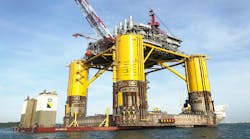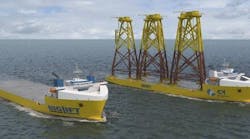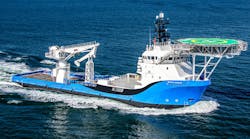View Article as Single page
Since those deals were done, several more floater contracts were signed in October and November, all of which are for three years each. The company approved contracts for Seadrill deepwater drillships West Tellus and West Carina for work on the Libra field. West Tellus is currently stacked in the Canary Islands, and West Carina's delivery from Samsung in South Korea is expected in late 1Q 2015. The operator also approved three-year contract extensions for Seadrill semis West Eminence and West Taurus, drillships Ocean Rig Corcovado and Ocean Rig Mykonos, and Diamond Offshore semis Ocean Baroness, Ocean Courage, and Ocean Valor. All of these units will now be working in the country into 2018.
In addition, the Brazilian company recently opened up two tenders for work offshore Brazil, one for rigs rated to operate in up to at least 2,000 m (6,561 ft) of water, and the other for ultra-deepwater units that can work in water depths of at least 2,400 m (7,874 ft). The operator is looking to sign at least one rig from each tender. Market sources indicate that the term period for any eventual contracts is likely to be two or three years, starting in late 2015 or the first half of 2016. It is also possible that another extension or two could be in the works for rigs already in the country.
Setting up Sete Brasil
As mentioned previously, Petrobras has contracted a large number of newbuild floaters from domestic, presalt-focused contractor Sete Brasil, in which Petrobras also holds 10% interest. All but one of the 29 rigs Sete has ordered from five yards across Brazil have contracts with Petrobras with firm periods ranging from 10 to 20 years. Options could extend those terms by an additional five to 10 years each. However, the issue with these units is the time and money it will take to build and deliver them.
Construction has started on a number of them, but primarily at yards in Asia, including at Jurong in Singapore, Kawasaki in Japan, and Keppel in the Philippines and Singapore. When those hulls are done, they are then mobilized to the builder's corresponding yards in Brazil for the installation of engines, drilling equipment, and other topsides.
The primary reason the construction of these rigs starts overseas is because some of the Brazilian shipyards themselves are not yet completely built. Keppel's BrasFELS has made significant process on the semis it is assembling since the pontoons arrived from Asia, and the first two, which are named Urca and Frade, could very well meet its previously expected delivery of December 2015 and December 2016, respectively. Conversely, the first of all the rigs that was scheduled for delivery, drillship Arpoador, was originally slated to leave Singapore last year, but construction of its destination yard in Brazil, Jurong Aracruz, fell considerably behind schedule and the unit only arrived in late 2014. To compensate, Jurong had to do much more work on the rig in Singapore, so while it is still expected to meet its currently scheduled delivery date in August 2015, this could now potentially conflict with the company's local content requirements.
That said, following this initial batch of hulls being built overseas, Sete plans to build the remainder of the rigs almost entirely in Brazil, which should fulfill the high local content requirement mandated for the construction of this fleet. It is still very much a question as to when, and possibly even if in some cases, all 29 of these rigs will be delivered, partially because of the time it will take to build them, but also due to growing concerns regarding Sete's ability to amass the funds necessary to build them. Consequently, Petrobras may need to look to the international drilling fleet to meet its demands until these rigs are available, especially as the operator, and the nation, strives to keep expanding oil production in the future.
The author
Justin Smith is senior rig specialist, IHS Petrodata, Houston, Texas.




